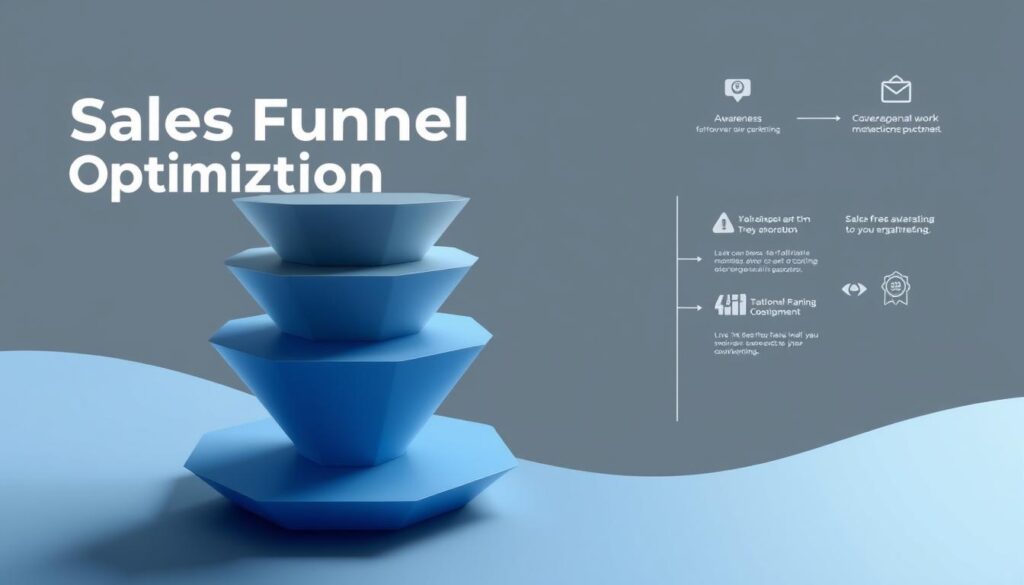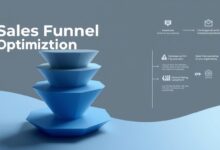Unlock the Power of CRM with Email Marketing: Our Top Pick
Imagine having a tool that turns customer interactions into sales opportunities automatically. When customer relationship management (CRM) software and email campaigns work together, they create a dynamic duo. Think of them like coffee and donuts—separately good, but unstoppable when paired.
This integration builds a seamless workflow. Contact details from email sign-ups flow directly into your database. No more copying data or missing leads. Your team gains real-time insights to craft personalized messages that resonate.
Better yet, every email click or open updates customer profiles automatically. This two-way data exchange helps tailor campaigns to individual preferences. The result? Higher engagement, smoother conversions, and stronger customer bonds.
In this guide, we’ll break down how to choose the right platform for your business. You’ll discover side-by-side comparisons, insider tips, and actionable steps to boost your ROI. Let’s explore how this powerful combo can transform your strategy.
Key Takeaways
- Automatically sync customer data between systems
- Capture leads directly from email interactions
- Personalize messages using real-time insights
- Eliminate manual data entry errors
- Create hyper-targeted campaigns faster
- Make informed decisions with unified analytics
- Find the best platform through expert reviews
Introduction to CRM with Email Marketing Integration
Combining customer management and outreach tools creates a powerhouse for business growth. Picture a single dashboard where contact details, purchase histories, and campaign metrics live together. This synergy turns scattered data into actionable insights.
Platforms typically follow two paths. Some begin as relationship managers and later add outreach features like automated messaging. Others start as campaign tools and evolve to track client interactions. Both approaches aim to simplify workflows while boosting results.
The magic happens when systems share data effortlessly. Every click on a promotional message updates customer profiles instantly. Website visits and buying patterns get logged automatically. This real-time tracking builds detailed audience segments for laser-focused campaigns.
Choosing the right solution means finding balance. Prioritize platforms that handle contact organization and message delivery equally well. Top-tier options eliminate juggling multiple tools, cutting costs and reducing data errors. Teams gain a 360-degree view of client journeys, making every interaction count.
Before selecting a system, map your goals. Do you need deeper audience insights or faster campaign launches? Answering these questions ensures your pick aligns with both immediate needs and long-term strategies. Simplicity meets power when communication and management tools work as one.
Understanding the Benefits of CRM Solutions in Email Marketing
Businesses thrive when they speak directly to their audience’s needs. Generic messages often get lost in crowded inboxes. But with detailed client profiles, you can craft campaigns that feel like one-on-one conversations.
Take a multi-location gym as an example. Membership tiers, geographic data, and preferences stored in client profiles let you send hyper-relevant offers. Notify members about classes at their nearest branch. Alert VIPs to premium perks. Share women-only event invites based on demographic insights.
This precision drives results. Segmented campaigns see 26% higher open rates and 50% more clicks than blanket blasts. Why? Recipients recognize the value in tailored content. They’re 14 times more likely to convert when messages match their interests.
Relevance also builds loyalty. Customers stay engaged when promotions align with their habits. Imagine a member receives yoga workshop invites after booking five sessions. That timing shows you’re paying attention—not just selling.
Systems that sync client data prevent costly mistakes. No accidental marathon ads to casual walkers. No discount offers to premium subscribers. Instead, every message strengthens relationships by respecting individual journeys.
Data-driven campaigns don’t just boost sales. They create meaningful connections that keep audiences coming back. When you show customers you understand them, they reward you with trust—and repeat business.
Key Features of CRM with Email Marketing Integration
Modern tools that blend client insights and outreach are changing how businesses connect. These platforms turn raw information into meaningful conversations through smart design. Let’s explore what makes them tick.
Tailored Experiences at Scale
Dynamic content adjusts messages based on individual preferences. Imagine sending birthday discounts to loyal customers or product suggestions aligned with past purchases—all without manual work.
Automated sequences handle repetitive tasks flawlessly:
- Welcome series for new subscribers
- Cart abandonment reminders
- Re-engagement prompts for inactive users
Real-Time Insights, Zero Effort
Systems update profiles instantly when users interact with messages. Open rates, clicks, and purchases sync across platforms. This eliminates outdated records and ensures campaigns use fresh data.
| Feature | Function | Benefit |
|---|---|---|
| Dynamic Content | Customizes messages | Boosts open rates by 40% |
| Lead Scoring | Ranks prospect value | Prioritizes high-potential contacts |
| Workflow Automation | Triggers follow-ups | Saves 8+ hours weekly |
Unified dashboards show how outreach impacts sales pipelines. Track which campaigns drive conversions or nurture long-term loyalty. Data becomes your compass, guiding every decision without guesswork.
How CRM Email Marketing Enhances Sales and Customer Engagement
Your sales team just closed a record-breaking quarter—what changed? Unified systems that track every interaction from first click to final purchase. This approach turns scattered data into a roadmap for building lasting relationships.

Improved Lead Tracking and Conversion
Watch prospects move smoothly through your funnel. Every email open or link click updates lead scores automatically. Teams instantly see who’s ready to buy versus who needs nurturing.
Automated sequences kick in based on behavior. Abandoned carts trigger discount offers. Demo requests prompt personalized follow-ups. No lead slips away when systems work in sync.
Optimized Sales Funnels
Personalized emails guide buyers at each stage. New subscribers get educational content. Repeat customers receive loyalty perks. Timing matters—systems send messages when contacts are most receptive.
Post-purchase campaigns keep the momentum going. A customer buys a laptop? They’ll get accessory suggestions a week later. This always-on engagement builds trust and repeat business.
Teams access complete interaction histories before meetings. Know which emails a prospect opened or which products they browsed. Conversations feel natural because you’re already speaking their language.
Comparing Top CRM Platforms: A Product Roundup
Finding the perfect match between client management and outreach tools can feel overwhelming. We’ve analyzed nine leading solutions to simplify your choice. From free starters to enterprise powerhouses, each platform offers distinct advantages for businesses at different stages.
Pricing varies widely. HubSpot’s free plan suits bootstrapped startups, while ActiveCampaign’s $50/month tier delivers advanced automation. Brevo stands out with budget-friendly options starting at $9/month, and Drip targets e-commerce brands at $39/month.
Feature depth matters as much as cost. EngageBay packs contact management and campaign tools into its $14.99/user plan—ideal for small teams. Freshsales Suite scales with businesses, offering AI-driven insights in higher tiers. Zoho’s free version supports three users, making collaboration accessible.
Consider your team’s growth trajectory. Salesmate’s $15/user plan grows into robust pipeline tracking at $50/user. Pipedrive keeps sales-focused teams lean with $24/month essentials. Meanwhile, platforms like Brevo offer clear upgrade paths from free trials to custom enterprise packages.
Implementation ease varies too. Tools like HubSpot prioritize intuitive dashboards, while ActiveCampaign requires more setup for complex workflows. Our upcoming deep dives will explore each solution’s learning curve, unique strengths, and ideal use cases to help you decide.
HubSpot CRM: A Closer Look
HubSpot commands over 31% of the marketing automation space, making it a go-to choice for businesses building client relationships. Its no-cost tier attracts startups, while scalable paid plans support growing teams. Let’s unpack what makes this platform stand out—and where it stumbles.
Where HubSpot Shines (and Stumbles)
The free plan delivers exceptional value. Manage 1,000 contacts, send 2,000 monthly messages, and track website activity—all without opening your wallet. Basic automation handles welcome sequences and lead scoring. Paid tiers remove branding and unlock premium templates.
However, design enthusiasts might yawn at its cookie-cutter forms. Costs also spike sharply for advanced tools like AI-driven workflows. Teams needing deep customization should budget carefully.
Breaking Down the Numbers
Upgrade paths cater to different needs:
- Starter ($20/month): 5,000 polished email templates and 10 automated actions
- Professional ($100/month): Unlimited automation, 300 workflows, and detailed analytics
Enterprise-level features like smart send times require custom pricing. While onboarding fees add up, the platform’s unified dashboard simplifies complex tasks. Sales pipelines sync with campaigns, letting teams track progress from first click to closed deal.
Ideal for small businesses and scaling ventures, HubSpot balances power with simplicity. Just know your must-have features before committing—those price jumps can surprise unprepared teams.
ActiveCampaign: Advanced Marketing Automation
What separates good automation from game-changing strategy? ActiveCampaign answers with tools that turn customer interactions into self-driving sales engines. Its platform lets teams build unlimited pipelines, assign deals to users, and watch progress unfold through intelligent triggers.
Every opened message or clicked link can update deal statuses automatically. Imagine a prospect engaging with three emails—your system moves them to “hot lead” without manual input. This behavior-driven approach keeps sales efforts laser-focused on ready buyers.
The secret weapon? Win probability scoring. By analyzing past deal patterns and current engagement, ActiveCampaign highlights which opportunities deserve extra attention. Sales teams ditch guesswork and chase leads most likely to convert.
Flexibility comes at a cost. Basic pipeline access starts at $50/month per user, while advanced sales tools jump to $150/month for four users. You’ll need separate plans for core features—email campaigns and contact management don’t share the same package.
Though report customization feels limited, the trade-off delivers unmatched automation depth. If your team thrives on precision and scale, this platform turns complex workflows into effortless momentum.
FAQ
Why should I combine email marketing with a CRM platform?
Linking these tools lets you send targeted campaigns, track customer behavior, and automate follow-ups—all while keeping contact data organized in one place. This boosts engagement and saves time.
Can I use automation features without technical skills?
Absolutely! Platforms like HubSpot and ActiveCampaign offer drag-and-drop builders for workflows and email sequences. You can set up triggers, like abandoned cart reminders, in minutes.
Are there free plans for small businesses?
Yes! HubSpot’s free tier includes basic contact management and email templates. Tools like Mailchimp also offer free tiers for smaller lists, making it easy to start without upfront costs.
How does personalization improve email campaigns?
Tailoring content—like using a contact’s name or past purchase history—increases open rates. CRMs store this data, so you can create dynamic emails that feel one-on-one.
What features matter most when choosing a platform?
Look for seamless data sync, customizable templates, and analytics. Advanced options like lead scoring (in ActiveCampaign) or deal tracking (in HubSpot) can also boost sales efficiency.
How do tools like HubSpot and ActiveCampaign differ?
HubSpot excels in user-friendly contact management and free tools, while ActiveCampaign offers deeper automation for complex workflows. Pricing and scalability vary, so match your needs.
Can CRMs track leads from email campaigns?
Yes! Platforms show which contacts opened emails, clicked links, or downloaded resources. This helps sales teams prioritize hot leads and tailor follow-ups.
Is it worth paying for premium plans?
If you need advanced analytics, higher email limits, or team collaboration tools, upgrading makes sense. Compare costs—some plans start as low as /month per user.
Do these tools work for small teams?
Definitely. Features like shared inboxes, automated replies, and deal pipelines simplify teamwork. Many platforms scale pricing based on your contact list size.
How quickly can I set up automated email sequences?
Most platforms let you build sequences in under an hour. Start with welcome emails or post-purchase follow-ups, then expand as you learn the system.








